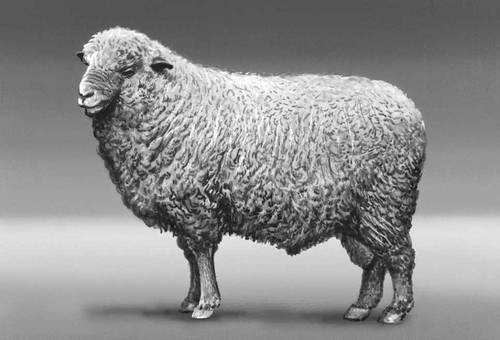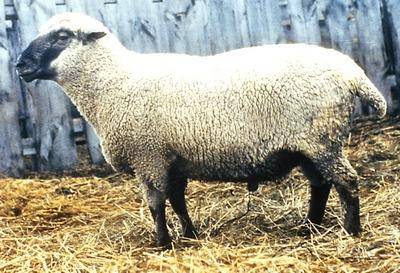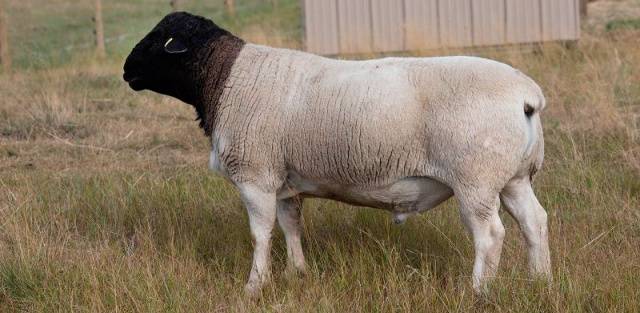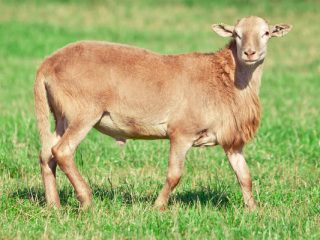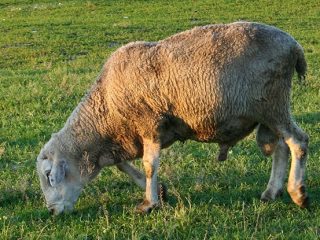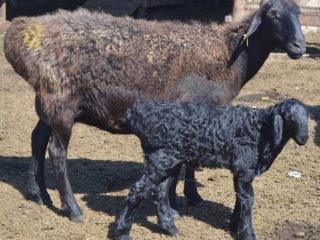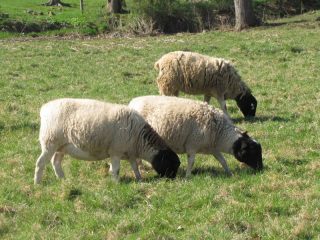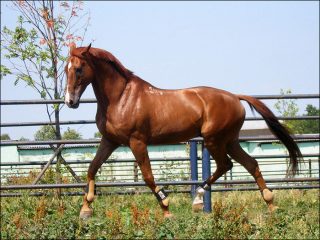Content
Sheep's wool, which once became the basis of the wealth of England and New Zealand, began to lose its importance with the advent of new artificial materials. Wool sheep have been replaced by meat breeds of sheep that produce tasty, tender meat that does not have the characteristic lamb smell.
During the Soviet era, lamb was not a very popular type of meat among the population precisely because of the specific smell, which was most likely present in the meat of wool sheep. In those days, farms in the European part of the USSR did not strive to breed meat breeds, focusing on wool and sheepskin.
The collapse of the Union and the almost complete stop of production hit the sheep industry very hard. Even successful collective and state farms, getting rid of unprofitable departments, first of all liquidated sheep. Meat sheep also fell under this skating rink, since convincing the population to buy lamb was very problematic, especially given the lack of money and the presence of cheap chicken legs from the USA on the shelves. In villages, it was more convenient for private owners to keep goats rather than sheep.
Nevertheless, the sheep managed to survive. Meat breeds of sheep in Russia have begun to develop and grow in number, although the Gorky sheep still needs the help of specialists and sheep breeding enthusiasts so as not to disappear completely.Some of the meat sheep breeds now bred in Russia were imported from the West, some from Central Asia, and some are native Russian breeds. A bright representative of the latter - romanov sheep.
Romanov breed of sheep
The breed was bred as a coarse-wool sheep with skin suitable for sewing winter clothing. This is an original Russian breed that can withstand the Russian cold well, due to which it is today one of the most numerous breeds kept by private owners in their yards.
The weight of Romanov sheep is relatively small, and their meat productivity is low. A ewe weighs about 50 kg, a ram up to 74. A female ram reaches a weight of 34 kg by 6 months. Young animals are sent for slaughter after reaching a live weight of 40 kg. At the same time, the slaughter yield of the carcass is less than 50%: 18 -19 kg. Of these, only 10-11 kg can be used for food. The rest of the weight is bones.
Romanov sheep “take” their multiple births, bringing 3-4 lambs at a time and being able to reproduce at any time of the year. But the lambs still need to be fed to slaughter weight. And this is also a monetary investment.
Gorky sheep
A meat breed of sheep bred in the Gorky region of the former USSR. Now this is the Nizhny Novgorod region and it is there that one of the small breeding flocks of these sheep is located. In addition to the Nizhny Novgorod region, the Gorky breed can be found in two more areas: Dalnekonstantinovsky and Bogorodsky. In the Kirov, Samara and Saratov regions, this breed is used as an improver for local coarse-wool sheep, which will have a very good effect on the livestock bred in these areas and negatively on the Gorky breed.
These sheep were bred from 1936 to 1950 from local northern ewes and Hampshire rams. Until 1960, work was carried out to improve the characteristics of the breed.
Description of the breed
Externally, the sheep are similar to their English ancestors - the Hampshires. The head is short and wide, the neck is fleshy and of medium length. The withers are wide and low, merging with the neck and forming one line with the back. The body is powerful, barrel-shaped. The dewlap is well developed. The chest is round. The back, lower back and sacrum form a straight top line. The legs are short, with a wide set. The bones are thin. The constitution is strong.
The color is ermine, that is, the head, tail, ears, and legs are black. On the legs, black hair reaches to the carpal and hock joints, on the head to the line of the eyes, the body is white. The length of the coat is from 10 to 17 cm. The main disadvantage of the coat is the uneven fineness in different parts of the body. There are no horns.
Rams weigh from 90 to 130 kg. Ewes 60 – 90 kg. The animals are well muscled.
Productive characteristics
Rams produce 5–6 kg of wool per year, ewes 3–4 kg. The quality of fineness is 50 - 58. But due to its heterogeneity, the wool of the Gorky breed does not have a high price.
The fertility of Gorky ewes is 125 - 130%, in breeding flocks it reaches 160%.
The meat productivity of Gorky breed sheep is slightly higher than that of the Romanov breed. By 6 months, lambs weigh 35–40 kg. Slaughter yield of carcass is 50 – 55%. In addition to meat, milk can be obtained from queens. During 4 months of lactation, one ewe can produce from 130 to 155 liters of milk.
So-called hairless breeds of meat sheep are gaining popularity. Animals, of course, have hair, but it is similar to the hair of ordinary shedding animals and consists of awns and winter undercoat.There is no need to trim these breeds. They shed their hair on their own. In Russia, such smooth-wooled breeds of meat sheep are represented by the Dorper, a meat breed of South African origin, and the still emerging breed group of Katum sheep.
Dorper
This breed was developed in South Africa in the first third of the 20th century by crossing Dorset Horn rams, fat-tailed Persian blackheads and fat-tailed sheep. Merino sheep also took part in breeding the breed, from which some Dorpers got the pure white color.
Conditions in South Africa, contrary to stereotypes, are quite harsh. Including sudden temperature changes. Forced to live in such conditions with a very modest food supply, Dorpers acquired excellent immunity and very high resistance to infectious diseases and are able to withstand even snowy, frosty winters. There is no doubt about their ability to withstand the summer heat. Dorpers are able to go without water for 2 days even in hot weather.
Description of Dorpers
Dorpers have a rather original color: a light gray body with a dark head, inherited from the Persian blackheads. Those Dorpers who are lucky enough to have Merino in their ancestors have white coat color both on the body and on the head.
The ears are medium in size. There are folds of skin on the neck. White-headed Dorpers have pink ears and a small growth on their head, which they inherited from Merino sheep.
Animals have a shortened facial part of the skull, as a result of which the head in profile appears small and cube-shaped. The legs are short, strong, capable of supporting the weight of a powerful, fleshy body.
Weight Dorper rams can reach up to 140 kg, with the minimum weight allowed by the standard being 90 kg.Ewes weigh 60 – 70 kg, some can gain up to 95 kg. The meat productivity of Dorper sheep is above average. Slaughter yield of carcass is 59%. At 3 months, Dorper lambs already weigh 25–50 kg, and by six months they can gain up to 70 kg.
Breeding sheep and rams
Dorper ewes can give birth to 2–3 strong lambs, capable of immediately following their mother. Lambing in Dorpers, as a rule, occurs without complications due to the structural features of the pelvic region.
In Russia, they have repeatedly tried to cross Romanov ewes with Dorper rams. The results of the first generation crossbreeds were encouraging, but it is too early to talk about breeding a new breed.
Nevertheless, keeping a purebred Dorper in Russia is not profitable due to its too short coat, in which it will still not be able to withstand Russian frosts. The second disadvantage of Dorpers is their rat tail, which is missing in photographs. It is missing for a simple reason: it is docked. In crossbred animals this deficiency is smoothed out.
One of the advantages is the high quality of Dorper meat. It is non-greasy, so it does not have the characteristic smell of lamb fat. In general, the meat of this breed of sheep has a delicate texture and good taste.
Dorpers have already been imported into Russia and, if desired, you can buy both breeding sheep and seed material for use on ewes of local breeds.
Conclusion
Breeding meat sheep breeds today is becoming a much more profitable business than obtaining wool or skins from them.These breeds are distinguished by their rapid weight gain and good quality meat without a buyer-intimidating odor. Considering that when breeding these sheep you do not have to wait a year before getting the first wool harvest, sheep breeding meat production is becoming more profitable than sheep wool production.


